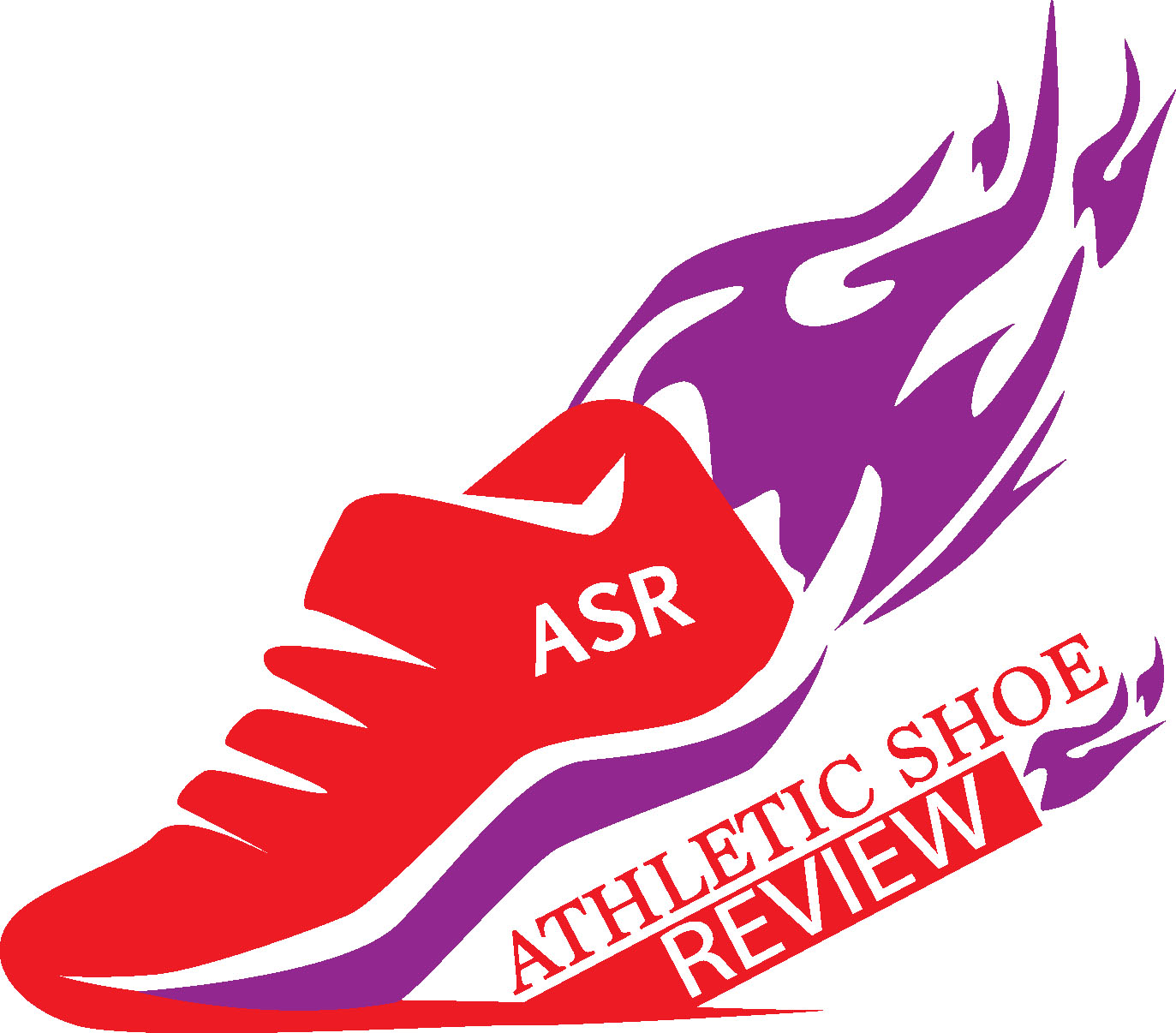

Shoes for Different Sports
Pretty much any type of athletic shoe or “sneaker” will offer you comfort and at least some support. But participating in a variety of sports can put different demands and stresses on your foot. So should you choose different sports shoes for specific sports?
According to the American Orthopaedic Foot & Ankle Society, if you participate in a specific sport three or more times a week, then you probably need a sport-specific shoe.
How do shoes designed for specific sports protect feet and aid in performance? There are differences in design and variations in material and weight in shoes that are made for different sports. These differences have been developed to protect the areas of the feet that encounter the most stress in a particular athletic activity, providing the most comfort and protection from injury.
Here is a breakdown of different sports and the features you should look for in each type of athletic shoe.
[Because running is such a popular sport, and a great number of women look for running shoes specific to that sport as well as for everyday activities, I have created a separate page just for running shoes.]
Aerobics/Dance
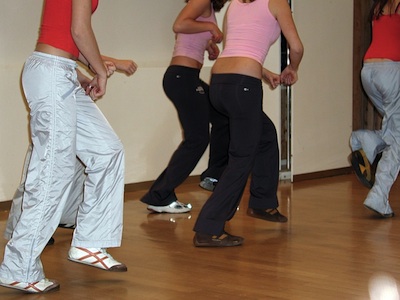
Aerobic dance shoes offer both stability for lateral movements and cushioning for shock absorption from the jumping involved. The soles should be fairly wide to prevent your feet from turning over when sliding and jumping. The shoes are usually lightweight for freedom of movement, and many feature a “spin spot” on the outsole for pivoting dance moves. Look for breathable materials, and there should be plenty of room in the toe box so you can get up on your toes for specific moves.
The American Academy of Podiatric Sports Medicine has indicated that since aerobics require a lot of lateral motion as well as twisting and turning, the shoes need to provide stability and support. Running shoes are not ideal for use in aerobics because they do not provide enough lateral stability, and they allow your heel to sit too high for proper performance technique.
Athleisure
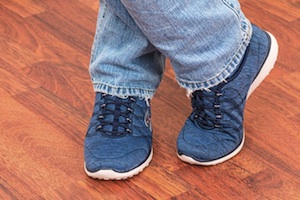
I realize that athleisure is not a sport. But it is a current trend in which people are wearing athletic-inspired shoes for non-athletic activities, so I thought I should address it. Especially because many shoe companies are designing athleisure shoes, and it’s important to understand that some of them would not be appropriate for performance sports.
For more details, visit my page devoted exclusively to this athletic inspired shoe trend here.
Badminton
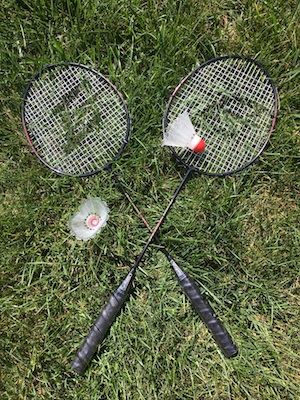
Are you aware that there are sports shoes made just for playing badminton? I had no idea, but apparently there are. Since the sport is often played on a wood floor, it’s important that your shoes have traction and grip so you don’t slip. Badminton shoes have a gum rubber sole for this purpose. But be careful not to let the soles get too dirty, or the “gummy” texture can actually become slippery. It helps to wear the shoes only on the badminton court and not for other casual wear.
Badminton, like tennis, requires a lot of lateral movement. Shoes should have lateral support and stability, and they should be lightweight. If you play badminton on a harder court, such as cement, a shoe made for tennis would work well.
Basketball

Most basketball shoes are “high tops” that offer more support for the ankle and help protect against the sudden starts and stops, side to side movements, and jumps that are hallmarks of the sport. Keep in mind that the high top may provide more support, but that doesn’t mean it will protect against ankle injuries.
The soles should be thick and stiff to offer stability for running on the court. A basketball court does not require the same traction as running or walking terrain, but the soles should be designed to prevent you from slipping or sliding on the court.
Bicycling

If you are a serious bicycler, either in a spinning class or out on the road, you may want to consider getting sports shoes specifically made for cycling. These shoes have a very stiff sole that helps the rider apply force to the pedals without straining the foot muscles. If your shoe is too flexible, such as with a running or training shoe, your foot can flex too much while riding and lead to pain in your legs or hips.
These shoes also keep the pedal from biting into the bottom of your foot. Most styles are designed to clip into your bicycle pedals to keep your feet in place as you pedal, making riding more efficient and comfortable.
Cycling shoes come in several varieties so you will need to decide if you would be wearing them for a spinning class, racing or long distance riding, or if you will also be walking in the shoes as a mountain biker or touring rider.
Cross-Training
Cross training shoes are made to wear for all your sports and activities, rather than having a different shoe for each sport you participate in. If you are involved in a variety of sports, you can save money by purchasing a cross training shoe.
Good cross-training shoes combine the flexibility of running shoes with the lateral control of tennis or court shoes. However, these shoes tend to be stiffer because they are designed to be more durable. They don’t have the same flexibility and cushioning as running shoes, so they are not as good for high impact activities. They are usually not as lightweight as typical running shoes.
If you are serious about one sport, you should probably invest in the proper shoe made for that sport. But if you vary your activities often, a cross-training shoe may be the way to go.
Field Hockey
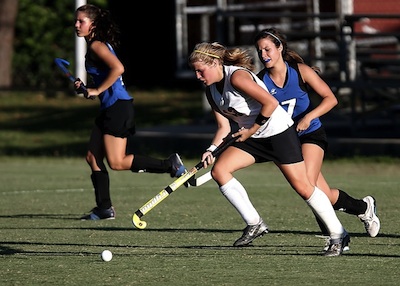
Since field hockey can be played on grass, turf, or indoor surfaces, the shoes you choose will depend on which surface you will be playing on. Cleats are best for playing on grass and help with grip and making quick cuts. Turf shoes have smaller studs than cleats and allow for a better grip on artificial turf, and many feature protective shields for the feet in case you are hit by the ball or a stick. Running shoes are your best bet for playing on indoor surfaces since they offer the best grip and comfort.
Golf
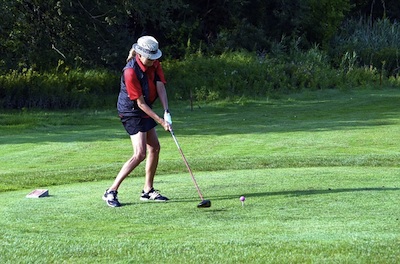
Golf shoes have cleats that provide traction on the green. They help keep your feet planted to the ground, stopping you from slipping when you swing, especially if the grass is wet. Be sure to choose a pair that are cushioning if you don’t golf with a cart. Golfing 18 holes makes for a pretty long walk and you’ll want to have comfortable shoes.
Lacrosse
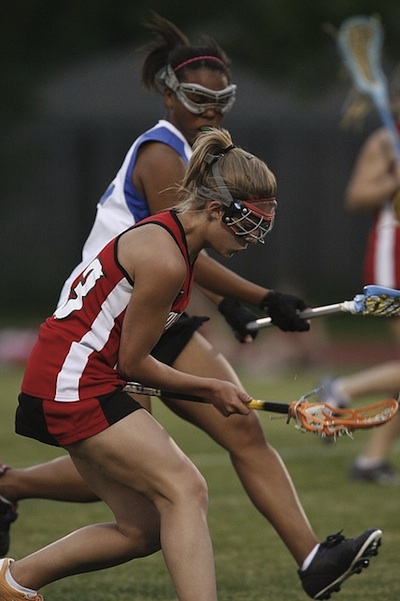
Lacrosse shoes have cleats on the outside of the soles to offer stability for all the movement involved in the sport. They also have a toe cleat to dig into the dirt for quick acceleration, and a higher cut for ankle support.
Running
[See my page devoted exclusively to running shoes.]
Running shoes are flexible and offer more cushioning than other types of shoes to withstand the impact of running. They are also durable and the soles are designed to provide traction whether you run on pavement, dirt, or a track. They are made of breathable materials since your feet usually sweat more when you are active. Many models feature reflective materials so that you can be seen if running at night.
Not only could it be beneficial to wear different types of shoes for different sports, it may even help reduce injury if you have several pairs of running shoes to alternate over time. According to the Scandinavian Journal of Medicine & Science in Sports, runners who used about three different shoe styles during a 22-week training period reduced their risk of injury by 39% compared with runners who used the same pair throughout that period.
Soccer

Soccer is another sport that is played better with cleats. They help you grip the field and make sudden stops, starts, and turns without slipping. They should also cushion your feet since playing in a game can have you running around for several hours.
Shoes designed for indoor soccer play or on artificial turf are made with molded rubber studs that are shorter than the cleats used on outdoor grass. They still provide the necessary grip, but they don’t dig as deeply into the grass.
Softball

Softball shoes have cleats that provide traction on the field. Their toe cleat can dig into the dirt for quick acceleration on the base paths or in the field. The cleats have spikes made of plastic, rubber, or metal, and which you choose depends on your league’s regulations.
Metal spikes generally offer the best traction, but many leagues do not allow them due to their potential to cause greater injury. Some cleats even come with interchangeable spikes so that you can change the type of spike you are using based on league regulations and/or field conditions.
Cleats come in high top and low top styles for more or less ankle support, depending on your needs. Pitchers should choose a low style because they need to be able to move their ankles more freely during their pitching motion.
Softball players should also look for a thick tongue in their cleats. This can help keep dirt from getting into your shoes and stop your laces from untying.
Tennis

Shoes designed specifically for tennis provide more lateral cushioning and stability than other shoes. Running and other sports don’t involve as much side to side movement as tennis does. Having a shoe that is low to the ground helps with lateral movement, so tennis shoes usually have less cushion than running shoes to take up less space in the bottom area of the shoe.
Tennis shoes also have more durable soles because the movements include a lot of sliding, stopping, and starting. I notice that the soles of my tennis shoes always wear out more quickly while the uppers may still look brand new, but with my running shoes, the cushioning wears out first.
Volleyball

Volleyball shoes may look like basketball shoes, but they have a gum rubber sole to provide the best traction on indoor courts. Volleyball players spend the majority of their time on the balls of their feet as they prepare to jump, so the most cushion and shock-absorption materials in the shoe are located in the mid-sole in this area. The shoes are usually lightweight and some are available in high-cut styles for added ankle support.
For more details about features to look for when buying volleyball shoes, see my article, How to Buy Volleyball Shoes.
Walking
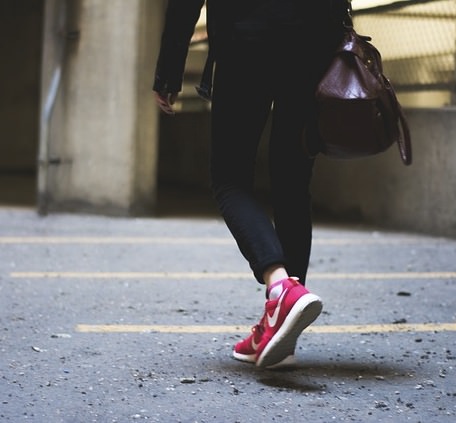
Walking shoes are stiffer than running shoes, but they still offer cushioned support. The impact of walking is more distributed throughout the foot than with running, where there is a specific impact point. Walking shoes generally offer good arch support but are less breathable than running shoes. The treads are more flat and spaced out for walking with flexibility on flat surfaces.
Whether you walk for fitness or just casually, the sole allows your foot to easily roll from heel to toe for this lower impact activity. You should look for a walking shoe that has an Achilles notch, which is a cut-out at the back of the shoe that allows more freedom of movement for the Achilles tendon.
